Ashgabat Monuments
Thursday, 27th August 2009 by Ian Brown
The city of Ashgabat - capital of Turkmenistan - is dominated by monuments to one man's megalomania - former President-for-Life Saparmurat Niyazov. Take, for example, the 75m tall Arch of Neutrality, which he subtly topped with a 12m gold-plated statue of himself. Not content with just a normal statue, he had it created such that it would rotate through the course of each day so it was always facing the sun. 1
The Arch is an indication that this former Soviet republic declared itself permanently neutral after the Soviet Union fell apart. While this foreign policy initiative had the potential to be positive, internally the country was facing immense hardships, human rights abuses and intense poverty, all while one of the world's worst dictators spent lavishly on monuments to his madness. Niyazov claimed the title of President-for-Life after an election in which he hand-picked a single candidate for each electoral district.
To the south of the Arch of Neutrality lie the President's Palace, another large palace for his family, and the Ten Years of Independence Park, one of several lush expanses of green in an otherwise arid city - use of water being just one way in which Niyazov showed his power and spent his money2. The park features a large fountain statue of 10 horses, and another gold statue of Niyazov.
One of Niyazov's more outlandish "achievements" was his authorship of Ruhnama, or Book of the Soul, commemorated in the south of the city with a monument and more fountains. The large replica of the book opens and closes on special occasions (when the motor isn't burnt out) to reveal video screens showing scenes from his life. The monument is the small circle to the left of the huge white stage / performance / fountain area.
Amongst other marvellous powers, Niyazov claimed the Ruhnama could guarantee entrance to paradise for anyone who read it three times, and heal those suffering from illness after he closed all the hospitals outside the capital. Knowledge of it was essential for any job with the state, and even for taking a driving test. The text is available online in 22 languages if you are in need of enlightenment or struggling with your driving skills.
In the same park as the Ruhnama Monument are the Independence Monument (inspired by tents and headwear; topped by a giant gold spire and fronted by yet another gold statue), a Museum of Turkmen Values, a significant network of ponds and fountains, tributes to past Turkmen heroes, and (seeming rather out of place) a shopping mall inside a huge 5-legged monument which features cascading sheets of water and five-headed eagles, though not many shops apparently.
To the south-west of the city is the modestly-named Turkmenbashi3 Eternally Great Park, starting point of Niyazov's 'health walk' - a strenuous 8km trek which ministers were forced to walk regularly, while the President himself would take the rather less strenuous helicopter option - landing at the top in time to welcome the front-runners and berate the stragglers.
The monument at the base is made entirely of white marble4, the glare from which caused serious problems for the satellite camera. Near the end of the walk there are large writings on the hillside, presumably inspirational texts to help you on the final push to the summit. There is also a longer route for those in need of additional health.
Finally, to the west of the city, where Niyazov built the largest mosque in Central Asia, partly as a memorial to the village where his mother died in the 1948 earthquake which devastated the region. The spectacular building is somewhat confusing, with quotations from both the Koran and the Ruhnama.
Niyazov died suddenly in 2006. Since then the people of Turkmenistan are seeing more freedoms, but residents of Ashgabat doubtless spend their days wondering at the folly of what was left behind.
Thanks to Birdseed, Catherine and Hamish.
-
A BBC report from a year ago indicates that the statue was to be moved, but I've not been able to determine if that actually happened, and if so - where it was moved to. ↩︎
-
Take a look at this spectacular traffic island near the airport! ↩︎
-
Turkmenbashi was Niyazov's adopted name, meaning Leader of the Turkmen. ↩︎
-
Including the large statue of Niyazov. Perhaps gold was in short supply? ↩︎
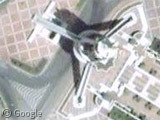
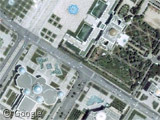
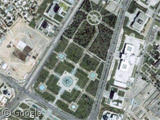
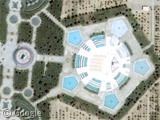
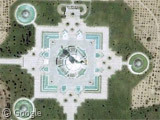
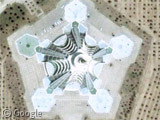
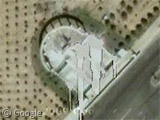
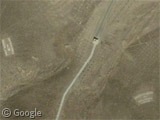
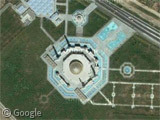
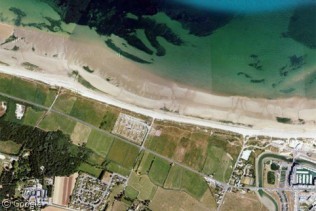
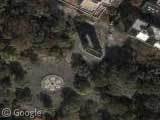
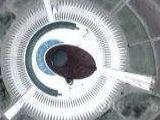

Not to forget the crazy “Ice Palace in the Desert” project, which however never got out of the “crazy idea” phase: http://news.bbc.co.uk/2/hi/asia-pacific/3554626.stm
Thanks Flümo, I hadn’t read about that little scheme.
I love the understated last sentence in the article: “The Turkmen mountains are relatively high, but it is hard to imagine the palace remaining frozen without some sort of technical help.” Maybe they just need to wave a copy of the Ruhnama at it, and it will magically stay frozen?
The theme park it mentions is here: https://www.googlesightseeing.com/maps?p=&c=&t=h&hl=en&ll=37.921857,58.37388&z=16, with Wikipedia info here: http://en.wikipedia.org/wiki/Ashgabat_Theme_Park.
Great post Ian. I had no idea about this place 🙂
BBC confirms that the revolving golden statue has now been removed: http://www.bbc.co.uk/news/world-asia-pacific-11095257